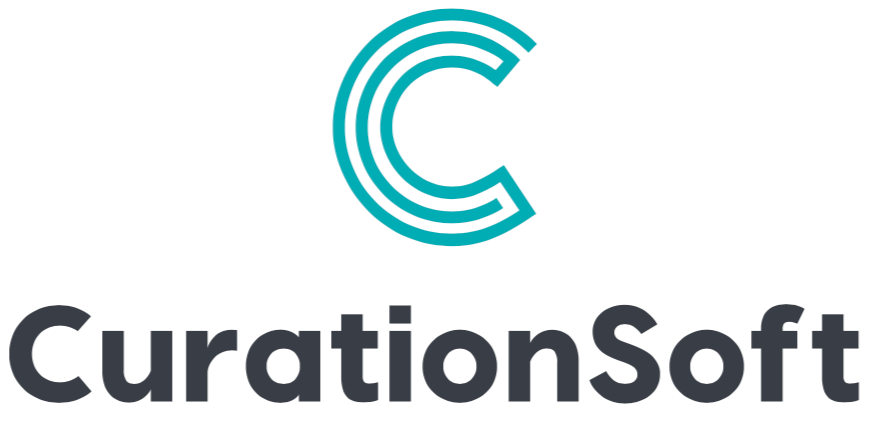The Definitive Guide to Content Curation in 2023
Content curation is an essential part of any successful digital marketing strategy in 2023. It involves strategically collecting, organizing and sharing content related to a particular topic or industry with the goal of providing value for your audience.
In this guide we will cover everything you need to know about content curation: from creating a strategic plan and finding the right tools, to optimizing your efforts and measuring success. We’ll also provide tips on different types of curated content ideas as well as best practices for promoting it on social media platforms. Get ready to become an expert in content curation!

What is Content Curation?
The term “content curation” refers to the process of selecting, gathering, presenting, and disseminating information found on the World Wide Web. Quality resources, such as “best of” lists or content aimed at improving a specific ability, are the hallmark of curated content.
Benefits of Content Curation
Content curation has many benefits for marketers looking to engage their target audiences more effectively. By providing useful resources on topics they care about in one convenient place you can save time while still delivering quality content consistently over time. Additionally it helps build trust between you and your audience as well as establish yourself as an authority in your field since you’re able to share reliable information from trusted sources quickly and easily .
How quickly can you click “share” on something insightful you’ve read, as compared to coming up with an idea, writing, and designing an entirely new social media post from scratch?
It takes time and effort to develop a successful social media strategy, but not everything you share needs to be ground-breaking.
The time spent creating material is reduced when you curate it. And time and money, as you typically won’t need to hire specialists like designers or writers to make it. By using curated material, you may maintain a daily social media presence without incurring the additional costs associated with creating that content.
You should, as a content provider and brand, find your own unique voice and opinion, but no one wants to live in a constant echo chamber. Your target audience is the same way.
Including the (respectful) viewpoints and ideas of other industry experts on your platform is a great way to keep things interesting. It’s a conversation starter that can lead to some really interesting discussions and new friendships.
For the sake of audience participation, you need not broadcast your every thought. As with any form of content, make sure it’s something your target demographic actually wants to read. When you provide your audience with links to the best articles in your field, you give them access to a wide range of viewpoints.
Types of Content Curation
There are several different types of content curation depending on what type of material you want to focus on, including text-based articles, images, audio files, video clips, infographics and slideshows. Each type requires its own approach when it comes to researching potential sources; so make sure you know which format works best for each situation before getting started.
Content curation is an effective way to create and share content that resonates with your target audience. With a well-thought out strategy, you can make sure your efforts are worthwhile and help drive success for your business. Let’s look at how to create a content curation strategy in the next section.
1. Aggregated Content Curation
This type of content curation involves collecting, organizing and sharing existing content from various sources in order to provide a comprehensive overview on a particular topic or industry.
2. Generated Content Curation
This type of content curation involves creating original content based on the collected information from aggregated sources. It requires more effort than simply gathering existing materials but can be extremely valuable for SEO purposes as it is unique and provides fresh perspectives on topics that are already well-covered by other websites.
3. Curated Experiences
This type of content curation focuses on providing an immersive experience for users by combining different types of media such as images, videos, audio files and text into one cohesive package that tells a story or conveys an idea in an engaging way.
How to Create a Content Curation Strategy
Content curation is an important part of any content marketing strategy. It involves finding, selecting, and sharing relevant content from other sources to engage your audience and increase visibility for your brand. To create a successful content curation strategy, you need to identify your target audience and goals, research and select sources for your content curation efforts, create a schedule for those efforts, and measure the success of your strategy.
Identifying Your Audience and Goals
Before creating a content curation plan it’s essential to understand who you are trying to reach with this type of content. Consider the demographics of your target audience such as age range or location in order to determine what kind of topics they may be interested in reading about. Additionally consider what types of posts will best help you achieve specific business objectives such as increasing website traffic or generating leads. Once these elements have been identified it will be easier to craft an effective plan that meets both the needs of readers as well as business goals.
Researching for Your Content Curation:
After identifying who you want to reach with curated content it’s time to find reliable sources that can provide quality material on those topics. Look into industry publications or blogs that cover similar topics so that you can share their work with readers while also providing them valuable information from trusted experts in the field. Additionally, consider leveraging social media platforms like Twitter or LinkedIn where users post interesting articles related to certain topics which could serve as great source material for curated posts on those same subjects.
Creating a Schedule For Your Content Curation Efforts:
Now that you know what kind of material should be shared it’s important to establish how often new posts should go out so there is consistent engagement from followers without overwhelming them with too much information at once. Depending on the size of your team this could mean scheduling one post per day or even just once per week but whatever frequency is chosen make sure there is enough time between each post so readers don’t feel bombarded by too many updates all at once while still staying engaged over time .
Always Credit the Source
When sharing content from other sources, especially on social media, it is imperative to properly attribute the work to its original author(s) by linking back to their profile or profile page. You should never attempt to pass off curated content as original work created by your team. On social media sites like Instagram and Twitter, use the @ symbol to tag the writer or company.
Subscribe to Newsletter
Do you feel overwhelmed by the prospect of beginning your search for suitable content? The first step on your trip should be to sign up for relevant email newsletters. On their websites or within the content itself, many brands have subscription forms for their material delivered in the form of newsletters.
Tracking Performance
Finally, tracking metrics associated with each piece published allows marketers to see if their efforts are actually paying off in terms of tangible results like increased website visits or more leads generated through forms filled out after clicking links included within blog posts. Tools like Google Analytics offer insights into user behavior including page views, bounce rate, average session duration, etc., which can help marketers adjust their approach accordingly based on performance data.
Having a clear content curation strategy is essential for successful marketing, and the right tools can help you automate the process. Now let’s explore some of the available tools to help streamline your content curation efforts.
Tools for Automating Content Curation
Automating the process can save time and energy, allowing marketers to focus on other aspects of their campaigns. Here are some tools that can help automate content curation:
a. Social Media Management Platforms
Social media management platforms such as Hootsuite and Buffer allow users to schedule posts in advance, track analytics, monitor conversations, and more. These platforms also offer features like RSS feeds for easy content discovery and integration with third-party apps for further automation capabilities.
b. RSS Feed Aggregators and Readers
RSS feed aggregators such as Feedly make it easy to find relevant content from multiple sources in one place by subscribing to specific topics or keywords you’re interested in tracking. Once subscribed, these services will deliver new articles directly into your reader so you don’t have to search for them manually every day.
AI Newsletters
AI-powered curated newsletters use algorithms to identify the most relevant stories based on user preferences or interests and then deliver them straight into a subscriber’s inbox daily or weekly, depending on how often they want updates sent out. Services like Nuzzel provide personalized newsfeeds that update automatically without requiring manual effort from the user, making it easier than ever before to stay up-to-date with industry trends while saving time at the same time.
Automating content curation can help marketers save time and effort, allowing them to focus on optimizing their efforts for maximum impact. Next up, we’ll look at some tips for optimizing your content curation efforts.
Tips for Optimizing Your Content Curation Efforts
Visuals and Images
Visuals are an important part of content curation. They can help to engage your audience and make your content more memorable. Leverage visuals such as images, GIFs, infographics, and videos in order to draw attention to your curated content. This will help you stand out from the crowd and increase engagement with your audience.
Hashtags
Hashtags are another great way to optimize your content curation efforts. Hashtags allow you to categorize topics related to your curated content so that it is easier for people to find it on social media platforms like Twitter or Instagram. Use relevant hashtags when sharing curated content in order to increase visibility and reach a wider audience.
Finally, focus on quality over quantity when curating content for your website or blog. Quality is more important than quantity; if you provide valuable information that resonates with readers they will be more likely to return in the future. Take the time necessary to research topics thoroughly before creating any kind of curated post or article – this will ensure that you are providing only high-quality information that is useful for readers instead of just “filler” material meant solely for SEO purposes.
Keyword Research and Placement Strategies
Keywords are the foundation of any successful SEO strategy. Content writers must research relevant keywords to target in their content, as well as where to place them within the article. When researching keywords, consider what words your target audience is likely searching for when looking for information related to your topic.
Additionally, use keyword tools such as Google’s Keyword Planner or Moz’s Keyword Explorer to help you identify popular search terms related to your topic. Once you have identified a few relevant keywords, strategically place them throughout your content including titles, headings, subheadings and body copy.
By following these tips for optimizing your content curation efforts, you can create high-quality and engaging content that will help increase visibility and reach. Now let’s explore some ideas for different types of curated content to further improve your marketing strategy.
Ideas for Different Types of Curated Content
Lists and Roundups
Lists and roundups are a great way to curate content for your audience. They provide an easy-to-digest format that allows readers to quickly scan the list for relevant information. Examples of lists include “Top 10 Tips for Content Marketing” or “5 Ways to Improve Your SEO Strategy”. You can also create roundups, which are collections of related content from different sources on one topic. For example, you could compile blog posts from various industry experts on the same subject into one roundup post.
Infographics
Infographics are visual representations of data that make complex topics easier to understand in a short amount of time. They can be used as part of your content curation strategy by highlighting key points or statistics about a particular topic in an eye-catching way that will draw readers in and keep them engaged with your content.
Videos
Videos are becoming increasingly popular as a form of content curation due to their ability to capture attention and convey information quickly and effectively through visuals, audio, text, animation, etc.. Video curation is especially useful when it comes to breaking down complicated concepts into more digestible pieces so viewers can easily understand them without having to read long blocks of text or research extensively themselves.
Podcasts
Podcasts have become a popular form of curated content due to their ability to provide valuable insights into current trends within specific industries while giving listeners access to expert opinions on various topics without having to search multiple websites for relevant information themselves. Podcasts also allow users the convenience of listening while multitasking instead of having to sit down and read through lengthy articles or watch videos all the way through before moving onto something else.
Content curation is a great way to add value and diversity to your content marketing strategy. By following the best practices outlined in this article, you can ensure that your social media platforms are effectively sharing curated content for maximum reach and engagement.
Best Practices for Sharing Curated Content on Social Media Platforms
Sharing curated content on social media platforms is a great way to engage with your audience and increase visibility for your brand. To ensure that you’re getting the most out of this strategy, it’s important to follow best practices when sharing content.
Know the Guidelines of Each Platform
Every social media platform has its own set of guidelines and rules regarding what type of content can be shared, how often it should be posted, etc. It’s important to familiarize yourself with these guidelines in order to make sure that you don’t violate any rules or get flagged by the platform for inappropriate content.
Compelling Headline
Let’s pretend that 100 people read your blog. Eighty percent will scan your headline, but only twenty percent will read on.Your headlines, in other words, have a lot of work to do.
An effective headline will pull the reader in with precise information and provide enough material to pique their interest without giving away the entire narrative.
An examination of one hundred million Twitter and Facebook headlines reveals the length of an eye-catching headline. The optimal headline length was determined to be around 65 characters (around 11 words).
Craft Compelling Captions
The caption accompanying a post is just as important as the image or video itself. Make sure that you craft captions which accurately describe the post while also being engaging enough to draw viewers in and encourage them to click through or take some kind of action (e.g., like/share).
If you are curating someone else’s work, it is important to always give credit where credit is due. Tagging the original authors in posts helps build relationships between brands and increases trust among followers who may not have been aware of them before seeing their work featured on another account’s page.
By following the best practices for sharing curated content on social media platforms, you can increase engagement and drive traffic to your website. Now let’s look at how to measure the success of your content curation efforts.
How to Measure the Success of Your Content Curation Efforts
Measuring the success of your content curation efforts is essential to understanding how effective your strategy is. There are several metrics you can track to get a better idea of how well your content curation is performing.
Track Engagement Metrics
Tracking engagement metrics such as likes, shares, and comments on social media platforms will give you an indication of how much people are interacting with your curated content. This will help you understand what types of content resonate most with your audience and which topics they find interesting or engaging. You can also use tools like Google Analytics to measure website traffic from sources such as organic search, referrals, and social media posts that link back to your site.
Monitor Traffic Sources
Monitoring where visitors come from when they view or interact with your curated content can help you identify which channels are driving the most traffic and conversions for you. For example, if most of the visits to a particular page on your website came from a Twitter post featuring one of your curated articles, then it’s likely that Twitter was responsible for those visits and conversions. Knowing this information allows you to focus more resources on optimizing campaigns in those channels that have proven successful in driving results for you.
Analyzing conversion rates
The percentage of visitors who take action after viewing or interacting with a piece of content is another way to measure the success of a content curation campaign. By tracking clicks or views into leads or sales generated by each piece of curated material, marketers can gain valuable insights into which pieces were successful at converting readers into customers and prospects into leads, so they know what type of material works best for their target audience.
FAQs in Relation to Content Curation
Conclusion
In conclusion, content curation is an essential part of any successful digital marketing strategy. By understanding the basics of content curation and utilizing tools to automate the process, marketers can save time while still creating valuable content for their audiences. Additionally, optimizing your efforts with tips such as using relevant hashtags and measuring success are important components of a successful content curation strategy. With these strategies in mind, marketers can use content curation to effectively engage their target audience and drive meaningful results.
Are you looking for ways to improve your content marketing and SEO efforts? With curationsoft, we offer a simple solution that will help you quickly find the best content on the web to promote your business online. Our powerful tools enable efficient and effective content curation so that you can maximize visibility of relevant topics, drive organic traffic to your website, and ultimately increase conversions. Try out our platform today – it’s free!





